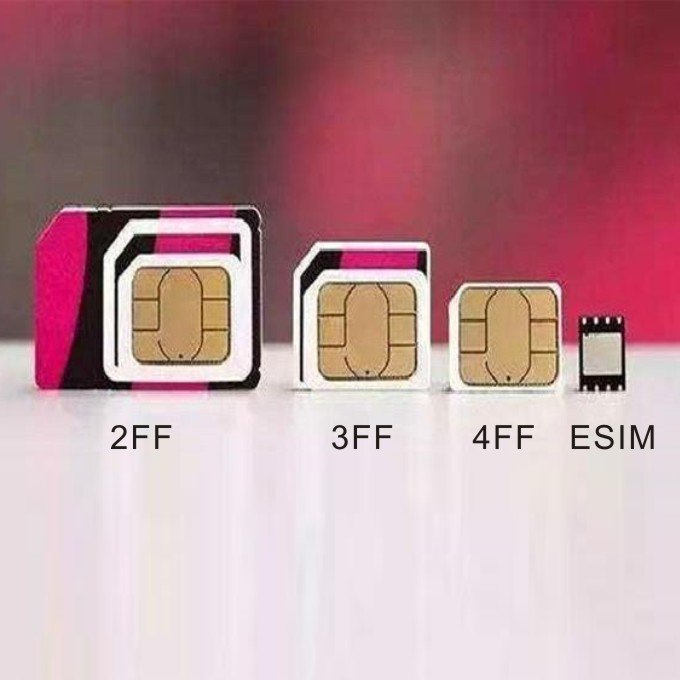5G Times
5G Times
On September 9th, China Unicom officially announced that it has signed the “5G Network Co-construction and Sharing Framework Cooperation Agreement” with China Telecom, and will cooperate to build a 5G access network nationwide.

This news is an explosive news, but it does not see any in-depth analysis. In addition to stressing that "significant significance" is to talk about "saving money to build 5G", there are still some unreasonable speculations about the merger of the two companies.
The next two are preparing to share and share, what is the time schedule? The announcement did not say that there was no mention in the framework agreement, and there was no voice in the industry. There are two possibilities for presenting such a situation: First, the confidentiality work is done very well; second, many questions are still not answered, so I don't know what to do next.
Personally think that this time is the latter.
In the absence of any internal information and no external analysis, I can only rely on my own technical understanding and experience. Telecom China Unicom is preparing to build its own core network to share wireless access networks. What will happen.
【Technology 】
In this picture, the communication technology and connection service provided by the operator is based on the technical standards, and then the equipment manufacturer conducts the research and development and production of the communication equipment according to the technical standards, and then the planned procurement department selects and purchases the communication network products. After that, the network construction department will carry out construction and system integration, and then the network maintenance department will carry out equipment maintenance and fault handling.
Under normal circumstances, telecom operators are users of mature technologies, and technological innovation comes from equipment vendors and even more front-end scientists; even telecom operators have proposed innovative thinking in the field of communication technology, which requires equipment vendors to implement.
Moreover, due to the "telecom-grade" service standards and technical requirements, equipment vendors must undergo internal rigorous testing and verification before delivery to telecom operators, and operators will also fully verify equipment and networks when delivering. For the end user to use.
This means that if it is a non-standard technical scenario that the manufacturer did not consider at the time of design, it takes a long time to get into the market.
The co-construction and sharing of 5G wireless access networks should be the case. Although there have been some cases of joint construction and sharing, I understand that they are not up to the extent of China Unicom.
One of the possible technical solutions: the identification and distribution of customers in the access network, the telecom users are sent to the core network of the telecommunications, and the Unicom users are sent to the core network of China Unicom.
Possible technical solution 2: Signal replication in the access network is sent to the core network of Telecom and China Unicom, and is identified by the core network. Users who are not the network refuse service.
The third possible technical solution: the access network accesses the communication to the core network of the operator to which it belongs, and then the core network performs customer identification and routing connection.
Next, communication experts will form a solution for these possible design system architectures, combining various combinations of scenarios.
For example, the most basic voice service should be developed under the different access networks of 5G shared base stations, 4G base stations, 3G base stations, etc., and various possibilities of switching between different base stations should be considered, and both telecommunications and China Unicom should be considered. Different voice service technology implementations (VoLTE and CSFB).
After determining the overall technical solution, system architecture, and solution, the communications experts will evaluate the technical retrofit solution and then compare multiple scenarios.
For example, the main change point of scheme 1 should be identification and offloading on the wireless side. The addition of this function involves both the modification of related software and the maintenance cost in the later stage (the number of wireless stations is widely distributed, and the operation and maintenance costs are high. And the adaptation problem of the terminal, if it involves a big change in the technical standards, then the movement is mostly.
The third part of the solution needs to be changed is the core network part. To realize the interconnection between the two core networks of China Telecom and China Unicom, it is necessary to first define a series of technical standards. It should be noted that although the two operators follow the 3GPP unified standards in large aspects, they have their own considerations and designs in terms of specific technical parameters and details. Nowadays, it is necessary to consider these technical details one by one to design a clear one, in order to start the technical transformation work.
The technical solutions are all ready, and the manufacturers begin to develop their own technical solutions, start development, transformation, testing, etc., and proceed step by step. Wait until the manufacturer has finished his work, then hand it over to the operator, and proceed to the next step according to the process and process.
If there is a lack of consideration, the technical plan has changed during the implementation process, which is probably a disaster - the work that has been completed is almost obsolete, and needs to be redesigned, redeveloped, and rescheduled.
Involved in the technical transformation of the entire network, to ensure the quality of the carrier-class, to be foolproof. This is the industrial characteristics of communication, and every step in the middle is indispensable.
-156920910956a575cbd55300.jpg)
【 Operation 】
The pre-technical plan is so careful, is it all right? Far from it.
Because in the operation chain, the access network sharing and sharing may cause more new problems.
The first is fee settlement.
The company provides a shared facility of physical nature, and it is relatively simple to conduct multi-tenant settlement and apportionment according to investment or usage ratio. The usage of the wireless access network is not static, and it is related to the customer side situation such as customer size/habit, roaming status, usage, etc., and also related to the network side of the networking structure, routing organization, and equipment supplier. Some traffic is to maintain the user's network status (similar to heartbeat, keep the network and customer connections, does not directly generate value), no income, how to combine? This account is very difficult to calculate.
The two companies emphasized the "big account" in the announcement agreement, stating that the settlement rules should be simplified as much as possible, but in actual operation, the trouble of confusing accounts would be even greater. Nowadays, the operators are not doing well. They are still rushing to grab customers, and the grassroots are forced to make careful calculations. How much synergy can be generated between operators, and many people are not optimistic.
Followed by network operation and maintenance and customer complaints.
The telecom operator needs to maintain the entire network from end to end. If the user has a complaint, it is necessary to find the cause of the fault in one link. From the historical experience, even the business with very high standard of standard and very standardized operation process, it is very difficult to encounter network maintenance and complaint handling across operators. For example, spam/telephone management, operators can intercept and process spam calls from this network, but if the calling number is another carrier, there is often no way to do it.
Regardless of the technical implementation, the shared wireless access network will cause the customer service personnel to face more new problems. The network maintenance personnel will face more new challenges, and the network is not fully controllable, which is likely to bring much risk. I am afraid it is difficult at this stage. I want to be full. The only way is to constantly explore and accumulate experience during the operation process, and gradually form a systematic response.
Again, the evolution of technology.
The current 5G network is all NSA mode, and will definitely go to SA in the future; but the upgrade of the two networks will certainly not be the same. Due to the rapid development of mobile communication networks, today's three domestic operators are coexisting with multiple networks. Even if China Unicom shuts down 2G networks, 3G/4G/5G will coexist for a long time. Moreover, because the network standard in the 3G era is different and the technical capabilities are different, operators will design a network upgrade and evolution plan according to their own situation.
When China Unicom upgrades its NSA to SA solution, it will consider the impact of the shared part of the network on network evolution, but this consideration is relatively passive and will not be a major factor. Vice versa, China Telecom will not adjust its network evolution plan on a large scale because it shares part of the access network. In order to reduce costs, the two companies only temporarily warmed up in the early 5G. When it is really necessary to build 5G, network capabilities and quality have become the core competitiveness of the company.
In many eyes, operators are monopolized. As long as the products of communication equipment manufacturers are taken over, they can lie down and earn money. In fact, telecom operators must not only do "telecom services" but also "efficient operations". It is also necessary to "in business words". The core is "operation", where the joys and sorrows, and how many people understand? For example, the three points mentioned in this section are just the ones that I personally came up with in the first place. They are neither professional nor systematic. The experts of China Unicom will consider more and must consider more.
【Exposure 】
I have written so much without paying attention to it. I will say a few words at the end and go straight to the theme. What impact will the construction and sharing have on China's 5G development?
In the short-term, the technology of Telecom Unicom's joint construction and sharing is very difficult. Equipment manufacturers need to refine their requirements, adjust technical solutions, and even redesign and develop products according to this change, and the cycle will become longer. This means that in areas where the wireless access network is jointly built and shared, the maturity of the technical solutions is insufficient, and the speed of building 5G for Telecom Unicom will be slower.
In the medium term, the sharing of construction means that the cost of building a network is reduced. However, the total investment of operators in 5G construction has not decreased, and more wireless access networks can be built to make 5G coverage even larger. This means that once the framework agreement of China Unicom is able to land, it can speed up the coverage of 5G access networks and promote the development of 5G.
In the long run, operators in many countries have concerns about the high investment of 5G. From the perspective of "business", they express great interest in the low-cost development of joint construction and sharing. If the two operators in China can successfully share the 5G access network and explore a series of experiences in the operation, this is a big benefit for the development of global 5G. This means that China will get more benefits from the 5G dividend and occupy a more favorable position in future industrial innovation.
Of course, the premise of achieving medium and long-term benefits is that China's wireless access network sharing plan has been a complete success.
5G sim card is coming,3G,4G,5G sim cards are popular because every phone needs it.

In the area where 5G is not widely used, our company still provides GSM SIM card, 3G SIM Card, 4G LTE SIM card, mobile phone test card, nfc sim card, Esim card and other products.
For more information, please contact us.



